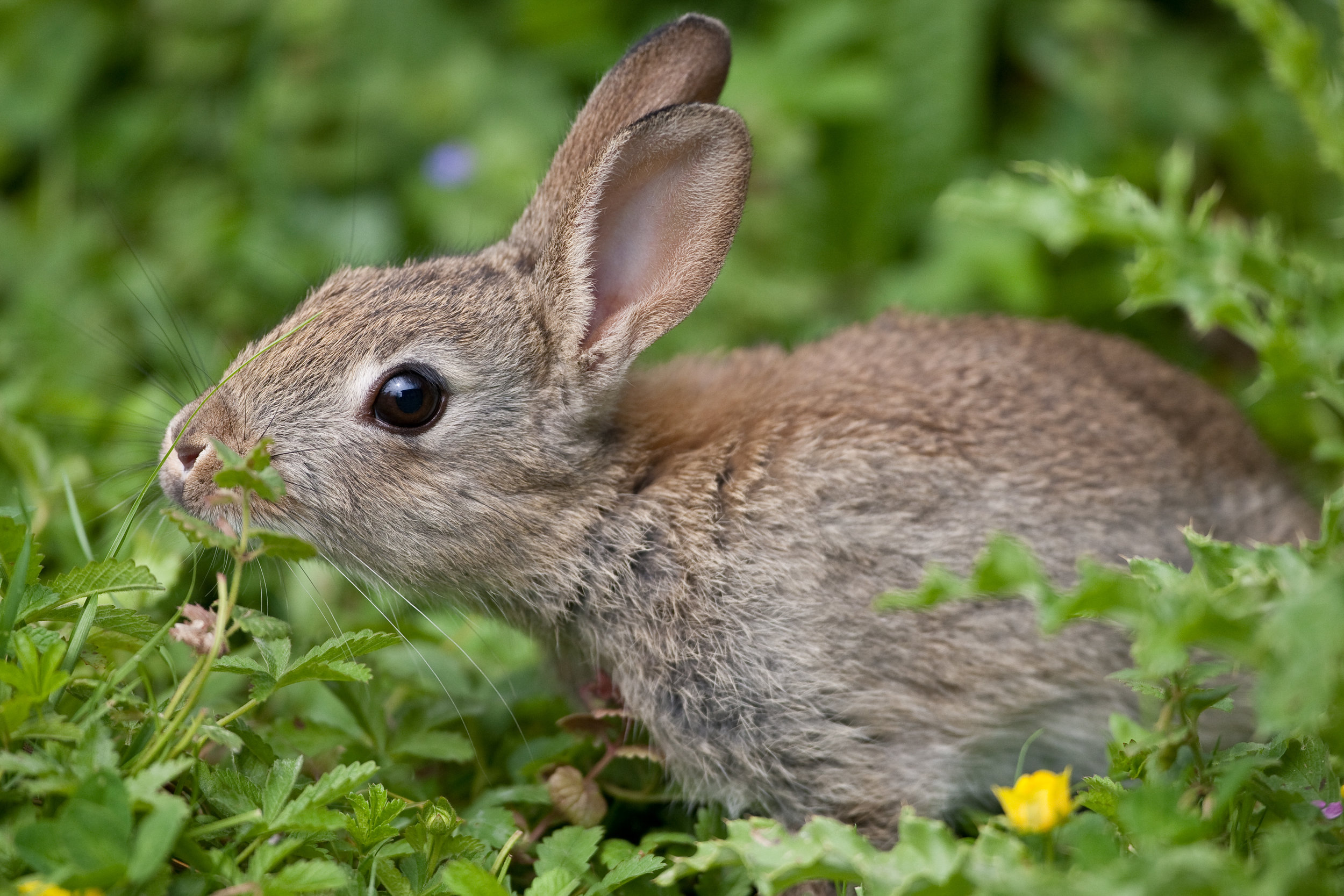Cottontail Rabbit
Cottontail rabbits occur throughout the state of Texas. They are moderately large, rusty brown with relatively short ears and large hind feet. They seldom venture far from brushy cover. In Central Texas, it commonly frequents brush-dotted pastures, the brushy edges of cultivated fields, and well-drained stream sides. It is common along country roads in many places, especially where the sides are grown up to dense vegetation and adjoining areas are heavily grazed and farmed.
Cottontails are mainly active in the twilight hours and at night, where they will venture into open pastures, meadows, or lawns to forage. In the daytime, they rest in beds in nearby thickets or underground burrows and undersized culverts.
Breeding occurs year-round, depending on temperature and rainfall. Four to five litters of one to eight young may be reared yearly. The young are blind and helpless at birth but rapidly grow. They are considered weaned at about seven weeks, usually weighing less than half a pound, and are no larger than a tennis ball.
If you come across a young cottontail with its eyes open, chances are it's not orphaned. It will make its way back to the nest. It is normal never to see the mother tending to her young, as she usually comes around twice daily to feed, either early morning or late at night. If you stumble across a nest you believe is abandoned, sprinkle baking flour around the nest. If the mother is returning, you'll see footprints in the flour. If the rabbit has remained in the same spot for two or more days and is easy to catch, it likely needs assistance.


